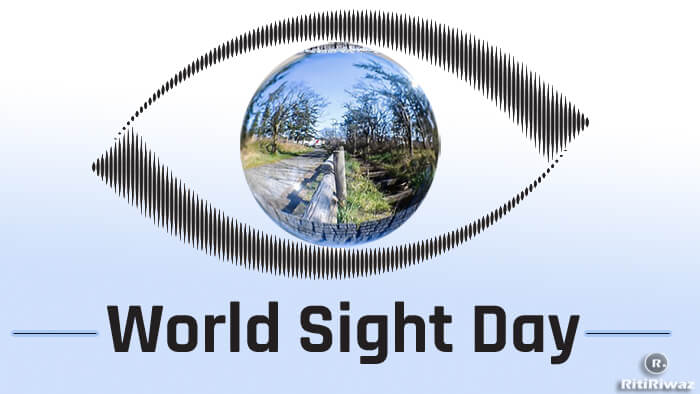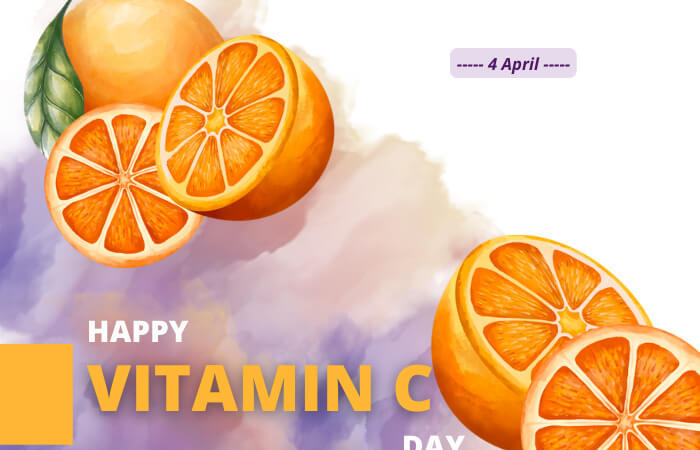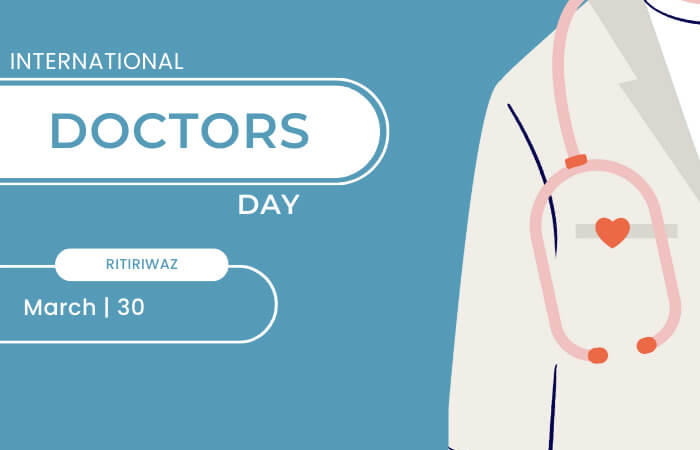World Sight Day – Second Thursday of October

The second Thursday of October is World Sight Day. The World Health Organisation (WHO) and the International Agency for the Prevention of Blindness (IAPB) both promote the day. On World Sight Day, media and medical or social action organizations hold various events and programs to promote public awareness of the problem of blindness in our world. There are also fundraising efforts and attempts to influence governments to take specific actions.
Every year, World Sight Day points out towards importance of raising public awareness of blindness and vision impairment being one of the major international public health issues.
World Sight Day 2023 theme – “Love your eyes at work.“
Here are 15 interesting facts about eyes:
1. Eye scans offer the highest security.
While it may sound like sci-fi, fingerprint identification is now commonplace on many smartphones, a fingerprint has 40 unique characteristics, while the eye’s iris has 256.
2. What is the maximum resolution of the human eye?
Scientist and photographer Dr. Roger Clark says the human eye is 576 megapixels, a much higher resolution than any camera could give you. 576 megapixels is a lot when you compare it to your smartphone, which has a fraction of that power. Our eyes work more like a live stream video than they do a camera, giving you a constant show of seamless, high-resolution footage.
3. Your eyes can get sunburned
When your eyes are exposed to too much UV (Ultraviolet) light you can develop a condition called photokeratitis. This can happen from too much natural sunlight as well as artificial. It’s particularly likely in snowy conditions on mountain tops because snow is very reflective. This painful condition can be avoided by always wearing sunglasses or snow goggles in bright conditions.
4. Pupils dilate when we’re excited
Have you ever noticed how cats’ eyes get bigger when they look at prey, or right before they’re about to jump on your lap? Just like cats, our pupils expand when we’re excited, interested, or scared. Equally, when we’re less engaged, our pupils also decrease in size.
5. Can you see mental illness in the eyes?
Researchers from the University of Aberdeen discovered that eye tests can detect Schizophrenia with 100% accuracy. In a group of Schizophrenia patients and a control group, the patients that had Schizophrenia performed worse overall. Scientists have been aware of people with Schizophrenia having abnormal eye patterns for some time, but only now is this being used to help diagnose the mental illness.
6. What causes red eyes in photos?
When someone takes a picture of you using a flash, some of that light is reflected back at the camera. Light bounces off the cornea and brightens the blood supply at the back of your eyes, producing the red eye effect in photos.
7. Why do pets get green eyes instead
That’s due to the animal’s “special reflective layer in the back of the eye termed the tapetum, which enhances nocturnal vision.”
8. We see things upside down
We actually see things upside down, it’s our brains that convert the image before us the right way up. When we’re born we’re color blind and for the first week or two, we see the world upside down. This is because we haven’t yet developed the ability to flip the image in front of us.
Bojana Danilovic from Serbia was born with spatial orientation, a phenomenon that stops her brain from converting the image in front of her the right way up. Literally seeing the world upside down isn’t as annoying as you might think. The screen on her computer is permanently flipped and she has a separate television for her family which rests permanently upside down.
9. The idea that carrots are good for eyesight most likely started as WWII propaganda.
Believe it or not, this is (mostly) a myth started by the British government during World War II. The Royal Air Force (RAF) used secret radar technology to pinpoint German bombers at night. But to keep that intel under wraps, the RAF claimed their success in fighting off German planes was due to British pilots improving their night vision by eating lots of carrots.
10. Certain foods do improve eye health
While it’s not exactly true that carrots help you see in the dark, carrots and other vegetables rich in Vitamin A do contain nutrients that contribute to good eye health. Leafy greens like spinach and kale, as well as Omega-3 fatty acids, found in salmon and tuna, also keep your eyes healthy.
11. Brown eyes are the most common
Brown eyes are the most common in people, while green eyes are considered the rarest. Blue or grey eyes fall in the middle. However, they are more common in Northern Europe where UV radiation is not as strong.
12. Relax your eyes
Your eye is the one part of your body that doesn’t need rest to function at 100%. You should however give the external muscles of your eyes some rest to assure proper function. The same goes for your eyelids.
13. We Blink Between 20,000 and 30,000 Times Every Day
Scientists have estimated that we blink between 20,000 and 30,000 times per day on average. Each blink lasts just two-tenths of a second but that adds up to approximately 1.5 hours per day.
14. You’ll Need Glasses When You Get Older
Around age 40, the vast majority of people start to experience a condition called presbyopia. Presbyopia is the hardening of lenses in the eye and makes it more difficult to focus on objects that are too close.
15. 80% of All Vision Impairment Can be Prevented or Cured
The World Health Organization (WHO) estimates that more than 80% of all vision impairment around the world can be prevented and even cured. The WHO highlights a number of successful public-private partnerships that have brought about real change in eye health for those countries that encouraged them.
Suggested Read: Important Days In October






